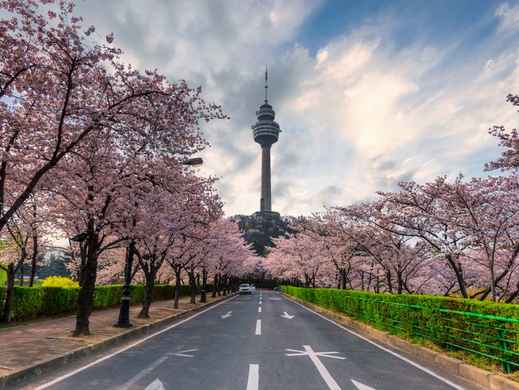


Yeongwol
Asia
/
South Korea
/
Yeongwol
Nestled in the eastern part of South Korea's Gangwon Province, Yeongwol is a picturesque rural county embraced by mountains and sliced by the winding Namhan River. The region experiences four distinct seasons, with vibrant autumn foliage, snowy winters, blooming springs, and hot, sometimes rainy summers – making spring and fall ideal times to visit for comfortable exploration weather.
Unlike Seoul's frenetic pace, Yeongwol offers a glimpse into traditional Korean countryside living. The locals maintain a slower, nature-connected lifestyle that has increasingly attracted urban dwellers seeking escape from city pressures. This rural charm creates an authentic atmosphere where traditional values and modern curiosities coexist.
What makes Yeongwol truly special is its dramatic natural landscapes coupled with surprising cultural depth. The area is famous for its limestone caves, including the spectacular Gosu Cave with its otherworldly formations, alongside riverside hiking trails that reveal breathtaking mountain vistas. But beyond nature, Yeongwol has reinvented itself as a destination for unique museums and cultural experiences.
Food-wise, Yeongwol offers countryside Korean classics with local specialties including mountain vegetable dishes (sanchae), freshwater fish preparations, and Yeongwol's famed apple products – from fresh fruit to various preserves and drinks that showcase the region's agricultural bounty.
Don't miss the Donggang River Museum of Natural History, which surprisingly houses one of Asia's most impressive fossil and mineral collections. The Kim Satgat Literary Museum is another standout, honoring the beloved wandering poet while offering insight into traditional Korean literature. For nature lovers, rafting the gentle curves of the Donggang River provides both adventure and unparalleled views of Yeongwol's dramatic mountain scenery.

Travel Tips for Yeongwol
What you need to know before traveling here
Getting Around Yeongwol
A guide to Yeongwol's local transportation
Local buses connect the main town center with smaller villages and attractions, though services can be infrequent. Bus schedules are typically posted only in Korean, so take photos of route information at your accommodation or the bus terminal. The T-Money card (purchasable at convenience stores) works on local buses, making payment easier. Check with locals or your accommodation about the last bus times, as services often end early in the evening.
Practical Tips for Yeongwol
Things to prepare and best way to visit
Spring (April-May) and fall (September-October) offer the most pleasant weather and natural beauty. Fall is especially stunning with colorful foliage covering the mountains, while spring brings wildflowers and comfortable temperatures. Summer can be hot and occasionally rainy with monsoon periods, while winter is cold but offers a peaceful snow-covered landscape.
There are accommodations available in Yeongwol, ranging from hotels to alternative accommodations such as guesthouses or homestays. It's advisable to check room availability and book accommodation before your departure schedule.
From Seoul, you can reach Yeongwol by bus, which takes 2 hours and 49 minutes. You can also take the A-train, which takes 3 hours and 15 minutes, or use taxis and private vehicles (car rental) with a travel time of about 1 hour and 57 minutes. The distance between the two destinations is about 163 km.
Remove your shoes when entering homes, traditional restaurants with floor seating, and some guesthouses. When dining, wait for elders to begin eating before you start, and never leave chopsticks standing vertically in rice. Bowing slightly when greeting people shows respect. Rural areas tend to be more conservative, so modest dress is appreciated when visiting temples or traditional villages.
Yeongwol is famous for its fermented soy-based dishes, such as doenjang jjigae (soybean paste stew) and ganjang gaejang (raw crab marinated in soy sauce). Additionally, some traditional Korean dishes that you must try in Yeongwol include sanchae bibimbap, Yeongwol hanwoo, kongguksu, hangari-galbi, achim-gugija guksu, namul bap, ganglange mukbap, daejeon jusim, and makguksu.
See All Practical Tips for Yeongwol

Travel Tips for Yeongwol












 Facebook
Facebook Instagram
Instagram TikTok
TikTok Youtube
Youtube Telegram
Telegram
